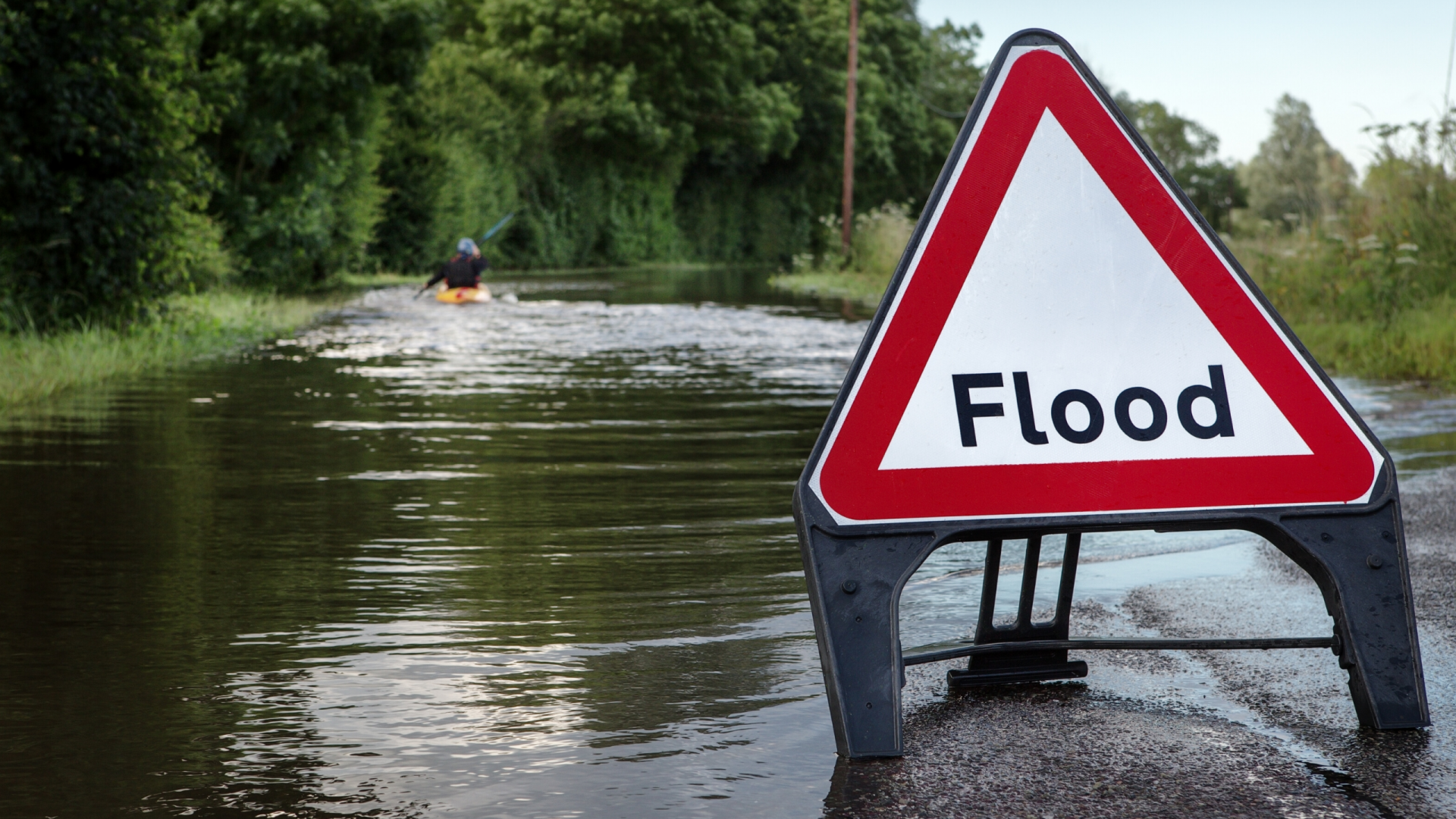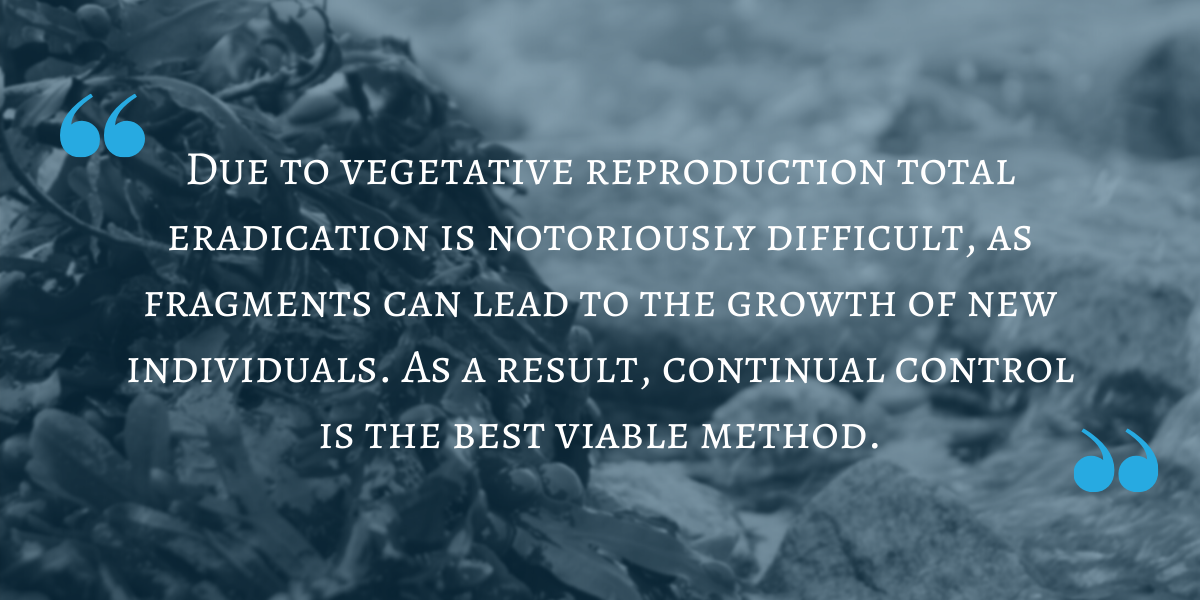
Invasive species are non-native species that have been introduced by human intervention, outside their natural range. These species are capable of reducing biodiversity, and in extreme cases, causing extinctions of native plants and animals. This is usually achieved by altering habitats and competing with native organisms for limited resources.
Invasive species are legislated against in Ireland by the European Communities (Birds and Natural Habitats) Regulations 2011. A blacklist of unwanted species is set out in the Regulations within Part 1 of the Third Schedule. Under Article 49, it is an offence, without a license, to grow, release or allow the dispersal of these species.
A number of invasive aquatic plants thrive in canals due to the slow moving or still water, which is usually nutrient rich. These invasive species are probably well recognised by fishermen and boat users of the canal system as they block navigation due to their dense growth habits. Examples of some species are mentioned below;
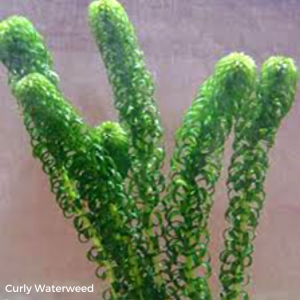
Curly Waterweed (Lagarosiphon Major) originated in Southern Africa, and is widely sold as an aquarium and garden pond plant. The Irish population is most likely due to deliberate or accidental release. The plant can grow in water up to 6m deep, and in addition to occupying the full water column, plant stands produce dense vegetation on the water surface. The leaves are strongly recurved and are borne in whorls of 3 or in a spiral arrangement. The long stem is brittle and easily broken which aids in dispersal, as this plant reproduces by fragmentation or vegetative reproduction. This is whereby a new plant forms from a fragment of the parent plant. Due to its rampant growth, it develops rapidly into a tangled mass that blocks out the light and alters the entire ecosystem beneath. Native aquatic plants and invertebrates are unable to survive under this dense accumulation. The plant also causes significant economic damage by choking up water channels and hydroelectric plants and by impairing boating and other water-based recreational activities, as I’m sure most of you are familiar with.
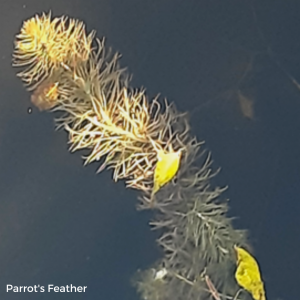
Parrot’s Feather (Myriophyllum Aquaticum) is native to Central and South America, and is a perennial (lives longer than two years). This aquatic plant grows in both emergent and submerged form (above and below water), with both forms being similar in appearance. This plant can grow between 2-5m in length, and the numerous leaves are arranged in whorls. It is most often found in nutrient rich waters. The initial spread of this species was by improper disposal of garden and aquarium plants. This species, similarly to Curly Waterweed, also spreads by vegetative fragmentation, whereby it can rapidly dominate a water body displacing native species. It can also populate watercourses and ditches to such an extent that it can cause flooding.
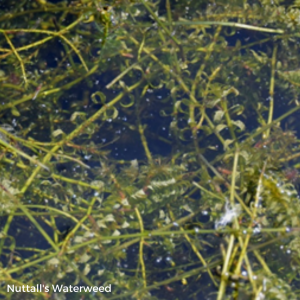
Nuttall’s Waterweed (Elodea nuttallii) favours still or slow flowing nutrient-rich water, and as a result is often found in canals. Like the other species mentioned above, Nuttall’s Waterweed tends to dominate native plant communities which may lead to their local communities. It is tolerant of disturbance and pollution. There are several species of Elodea present in Ireland, which are all listed on the Third Schedule. All these species are capable of taking up metals from the sediment and releasing them into the water, also changing the PH to limit the growth of other plant species. Once again, this species has most likely been introduced to Ireland through the garden plant trade, and spreads through fragmentation. This plant can be identified as the leaf tips taper to a point and the leaf is broadest at the base. Usually some leaves are strongly recurved, while the upper leaves are usually in whorls.
Due to the vegetative reproduction of these species, total eradication is notoriously difficult, as fragments can lead to the growth of new individuals. As a result, continual control is the best viable method. Plants are to be removed and placed away from watercourses so that drying in the sun can take place. The plants can be spread on fields as they are a good source of nutrients. It is important not to spread them near other watercourses to prevent further spread. The EU has removed permission to treat aquatic invasive weed species with most herbicides as they are non-selective and can have catastrophic effects on the environment, killing all plant species and associated wildlife. The microbial activity from the decaying plant species can also use up the oxygen within the water, leaving anaerobic conditions.
Mapping invasive species is important in monitoring the spread of these species and ensuring a rapid response. Species can be recorded on the National Biodiversity website or Biodiversity App. Identification of species may also be aided by the PlantNet App, and by the reading of further literature online, like Invasive Species Ireland and the National Biodiversity Data Centre.



